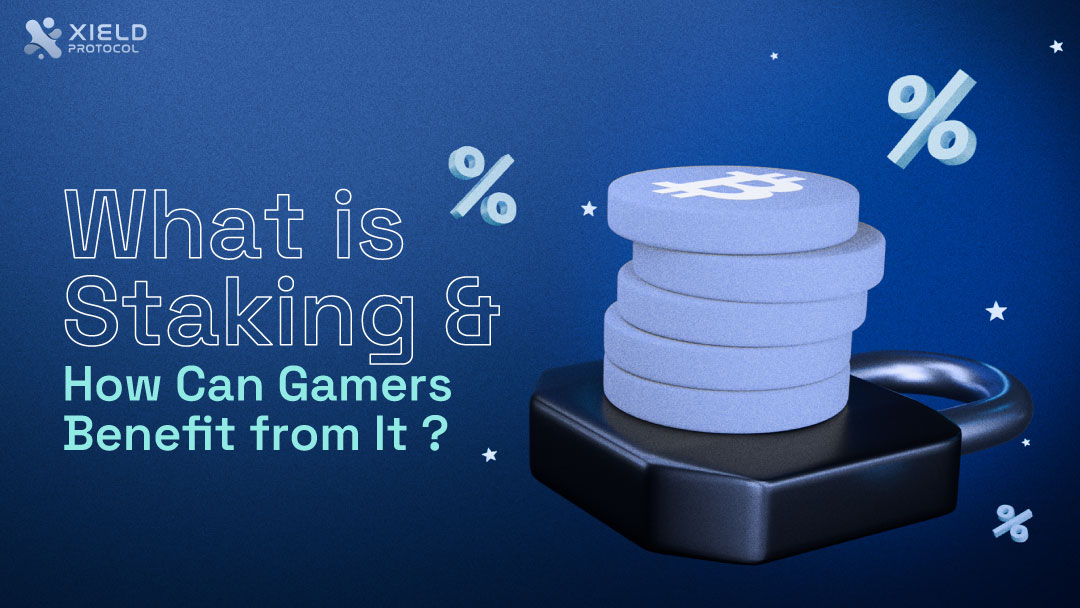Crypto staking, which is popular in the digital world, has surely found its way into the Web3 gaming sector. As a burgeoning industry, Web3 gaming platform is constantly seeking new methods to satisfy its players better. It’s a win-win situation if gamers can increase their earnings while also improving the game.
Gamefi staking infrastructure in Web3 gaming ecosystems provides a disruptive approach to game economics, player involvement, and community governance. Staking, which allows users to lock up tokens or assets in exchange for benefits, not only protects the network but also increases player loyalty and involvement in the game’s success.
This blog discusses the intriguing concept of web3 gaming and how staking rewards are being added to games to help players earn more money.
What is staking?
Staking in Web3 gaming is a critical component of the in-game economy, assuring sustainability and long-term success. To support vibrant in-game assets, games require liquid funds with a consistent value. Staking comes into play here, enticing participants to keep their tokens by paying them with more ones.
By offering these incentives, games may create an organic economy that encourages players to stake more tokens for longer periods, resulting in even higher rewards for the most loyal and engaged players.
Games sometimes include mechanics that incentivize players to delay rewards in exchange for a larger payoff. There are numerous types of staking accessible on play-to-earn platforms, giving players several options for improving their gaming experience and increasing their chances of winning. As players stake more tokens, they accumulate a larger pool of resources to reinvest in the game, resulting in a snowball effect that can lead to even bigger prizes.
Staking in Web3 gaming allows players to contribute to the game’s health and growth while receiving the advantages of their investment.
Popular Staking Models in Web3 Gaming
Reward Farming: Players bet tokens to accumulate more tokens or exclusive assets over time, usually from a predetermined reward pool.
Liquidity Provision: To gain incentives, players must provide liquidity to the game’s trading pairs on decentralized exchanges and stake their liquidity provider (LP) tokens.
Governance Staking: Tokens are staked to obtain voting power in governance proposals, which have a direct impact on the game’s direction and updates.
NFT Staking: In web3, players can stake NFTs to earn passive money, improve the NFTs’ qualities, or access exclusive features and content within the game.
Staking on Web3 games
Here are a few cases of how staking is utilized in Web3 games:
- Staking game tokens to obtain exclusive in-game items and properties that can help gamers improve their characters and in-game performance.
- Staking game tokens earns other tokens, which can then be used as in-game “energy” or activity points to execute certain tasks.
- Providing liquidity to in-game markets with tokens to earn more in-game credits or engage in leaderboard competitions to get seasonal game assets.
- Staking game tokens or non-fungible tokens (NFTs) for enhancing special items or boosting a player’s character level in the game.
- Staking game tokens to get incentives in cryptocurrencies like ETH or stablecoins, which may be used outside of the game for trading and monetization.
- Staking game tokens earn governance tokens, which allow players to vote on the use of the game’s treasury and affect the game’s roadmap priorities.
- Stake game tokens to protect the stability of the underlying blockchain and improve decentralization.
- Staking the gaming platform token permits players to obtain various tokens as incentives, which may include a mix of in-game tokens and cryptocurrency.
Beginner mistakes when staking cryptocurrency in Web3 gaming
Learning from the errors of others increases your chances of success with cryptocurrency staking. Here are some common mistakes novices make.
Executing insufficient research
Some crypto investors are tempted by high payouts and start staking their digital assets without understanding how it works or the hazards involved.
Ignore price volatility
New crypto investors may be unaware that the value of their staked tokens can plummet while locked up.
Ignoring lockdown times
A new crypto staker may not fully consider the lockup period before staking their cryptocurrency. In the event of an emergency, they may lose access to their cryptocurrency.
Compromising asset security
Token holders who are anxious to gain incentives may overlook the full range of security concerns associated with their decisions. For example, they may engage in noncustodial staking without the requisite understanding, security measures, or equipment.
Staking an excessive amount of cryptocurrency
Cryptocurrency staking is simply one strategy to potentially increase your investment portfolio; you should not rely solely on it for rewards. In other words, staking allows you to diversify your cryptocurrency portfolio.
Ignoring the tax effects
Staking rewards may be taxable, however, tax implications are commonly disregarded by inexperienced crypto stakers.
Benefits of Staking Mechanisms
Player Retention and Loyalty: Staking methods incentivize users to keep their holdings, which reduces sell pressure on the game’s token. This long-term investment establishes a loyal player base and stabilizes the game’s economy.
Economic Stability: Staking tokens limit the circulating quantity, which might assist manage inflation and token value. This consistency is critical for preserving the game’s economy.
Increased Security: In proof-of-stake (PoS) systems, stakeholders help secure the network by authenticating transactions or actions based on their stake, which improves the overall security and robustness of the gaming platform.
Governance Participation: Staking frequently includes governance rights, which give players a role in crucial decisions like the game’s development, the use of treasury funds, and policy changes, fostering a sense of ownership and community.
Risks of Staking in Web3 Gaming
Staking might be a profitable option to invest money in the cryptocurrency market. It has the potential to generate big returns, but it, like any other investment, carries risks. However, as early investors began to withdraw their profits, the price of the token dropped, and further investment in the project came to a standstill.
This fall resulted in large losses for many who invested later, providing a warning tale about the perils of staking. To reduce these risks, it is critical to conduct research and understand market trends before investing. It’s also critical to keep a constant eye on the market and be ready to make quick judgments based on changes.
Overall, staking can be a profitable way to invest your money, but you must approach it with prudence and make informed decisions. Here are some specific risks to keep an eye on:
- Smart Contract Risks: The dependence on smart contracts for staking procedures presents the possibility of errors and weaknesses, which might result in severe losses.
- Economic Imbalance: If not calibrated with the game’s growth and tokenomics, poorly designed staking rewards might lead to hyperinflation or other economic imbalances.
- Accessibility Issues: High entrance hurdles to staking (e.g., minimum stake requirements) can limit participation to wealthier players, compromising fairness.
- Liquidity Constraints: Staking can diminish a token’s liquidity, limiting participants’ ability to purchase, sell, and trade freely.
Closing Thoughts
Staking has become an essential component of Web3 games, providing players with numerous benefits such as in-game rewards, the utilization of special items, and even a chance to earn cryptocurrency. Staking game tokens allows players to access new features and improve their in-game performance while also helping to maintain the stability of the underlying blockchain.
The Gamefi staking platform in P2E gaming is a crucial breakthrough that connects player participation to economic sustainability. When done correctly, staking can give enormous benefits to both players and developers by creating a secure, participatory, and stable game ecosystem.
As the web3 gaming market evolves, the function of staking is likely to become more important, needing ongoing refinement and innovation to fulfill the community’s requirements and expectations.




